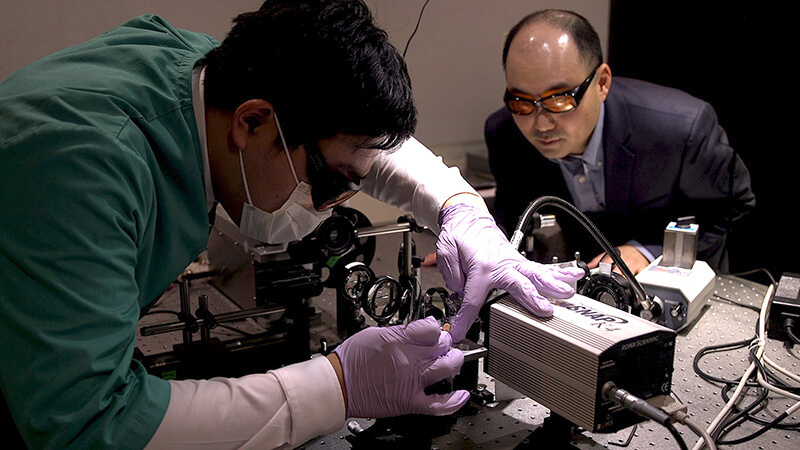A bioengineering mission that led to a rendezvous with Anderson localization
Light in biological media is known as freely diffusing because interference is negligible: when light waves undergo multiple scattering by heterogeneous biomacromolecules, the phases of scattered waves are mostly uncorrelated and their interference is cancelled out. We have shown that this long-standing perception is broken by an exquisite distribution of silk’s nanostructures. The phenotypic structures of silk found in nature bring their protein nanostructures into the regime of Anderson localization: the sizes, the distributions, and the low dimensionality of the silk’s nanostructures are conducive to the light localization effect. In such bio-nanostructures, average transmission progressively disappears, while occasionally the energy is confined with the localized mode, which also serve as a unique pathway for the energy flow. As wave localization is universal, the presented understanding of electromagnetic waves can be extended to any linear wave phenomena (e.g. x-ray, ultrasound, microwave, and terahertz wave) in biological and natural systems with strong interference and resonances, not just in optics. This finding can be an ab initio foundation for opening up largely unexplored opportunities to utilize biogenic resonances from disordered biological structures.
The fact that this is a naturally occurring material makes everything even much more exciting, and one could imagine future investigations how the resulting localized properties of wave have a biological relevance. Since the principles of physics and engineering were applied to solve the problems of medicine and biology for healthcare purposes (e.g. diagnostic or therapeutic), any heterogeneous (or disordered) biological structures has been considered as a nuisance rather than a resource. We will demonstrate fundamentally different approaches in which disorder of biological structures are used as a resource rather than a nuisance. Counterintuitively, the strong disorder induces Anderson localization and it is an efficient route for confining, transporting, and amplifying (also known as random lasers) wave in biological nanostructures, thereby opening a new avenue to biomedical imaging, biological quantum encryption, biosensors, biophotonic therapeutic systems, biological energy harvesting, and humanity (e.g. global engineering).
